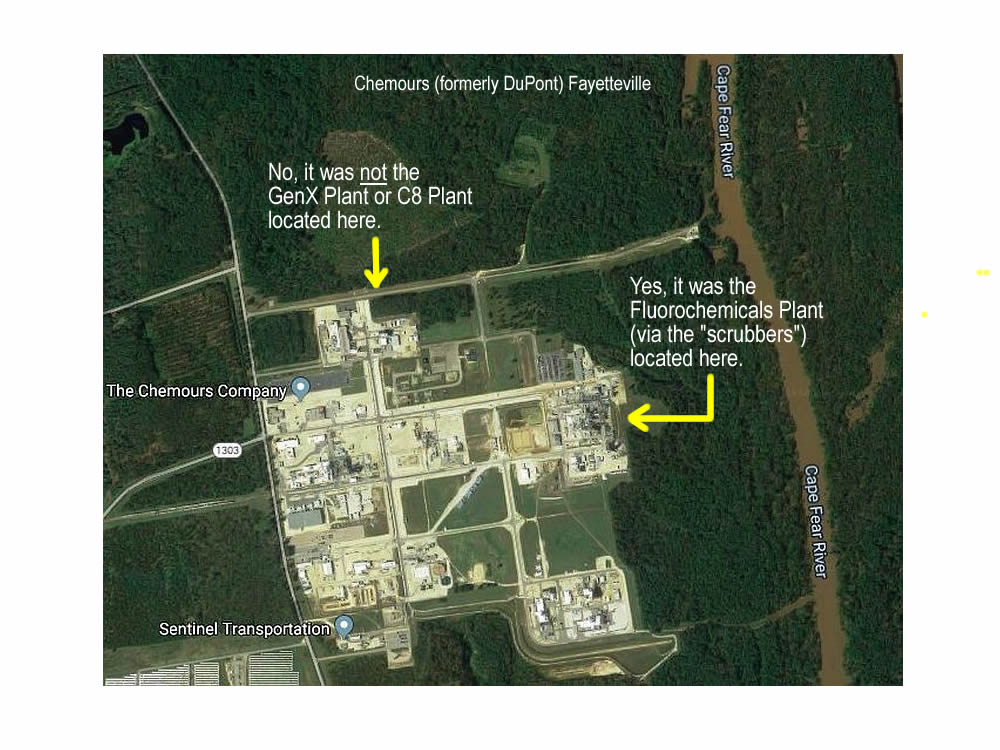

2017: As a result of investigative news reports, the public became aware of the Wilmington to Fayetteville Drinking Water Crisis in early June of 2017. On June 15, 2017, state government officials met with Chemours representatives, local government officials, and water treatment plant officials to discuss the drinking water crisis. At that meeting, Chemours (formerly DuPont) repeated what they had been reporting in writing to the DEQ Division of Air Quality for nearly 13 years, that PFAS chemical pollutants (acid fluorides, PFAAs, fluorocarbons, GenX and PFAS chemicals, etc.) were discharged from their Fluorochemicals Plant (via the scrubbers), not from the GenX or C8 plants. They also discussed one of the scrubber systems at the Fluorochemicals Plant and the associated chemical wastewater discharge containing GenX and PFAS chemicals. It is important to note that scrubbers are "control devices" regulated by government officials (NC DEQ Division of Air Quality and U.S. EPA under the Title V program).
Rather than using the term "Drinking Water Crisis," state government officials created a web page titled "GenX Investigation." This communications approach, and perhaps self-serving public relations strategy, may have misled the media and the public, giving the impression that state officials were investigating NC DEQ's 15-year knowledge and concealment of GenX and PFAS pollutants in the chemical wastewater (via the scrubbers) discharged into the Cape Fear River. However, as of June 30, 2021, there is no evidence or indication of an independent, bipartisan, and transparent investigation of DEQ's handling of the DuPont (Chemours) Fluorochemicals Plant, and how to prevent this from ever happening again.


